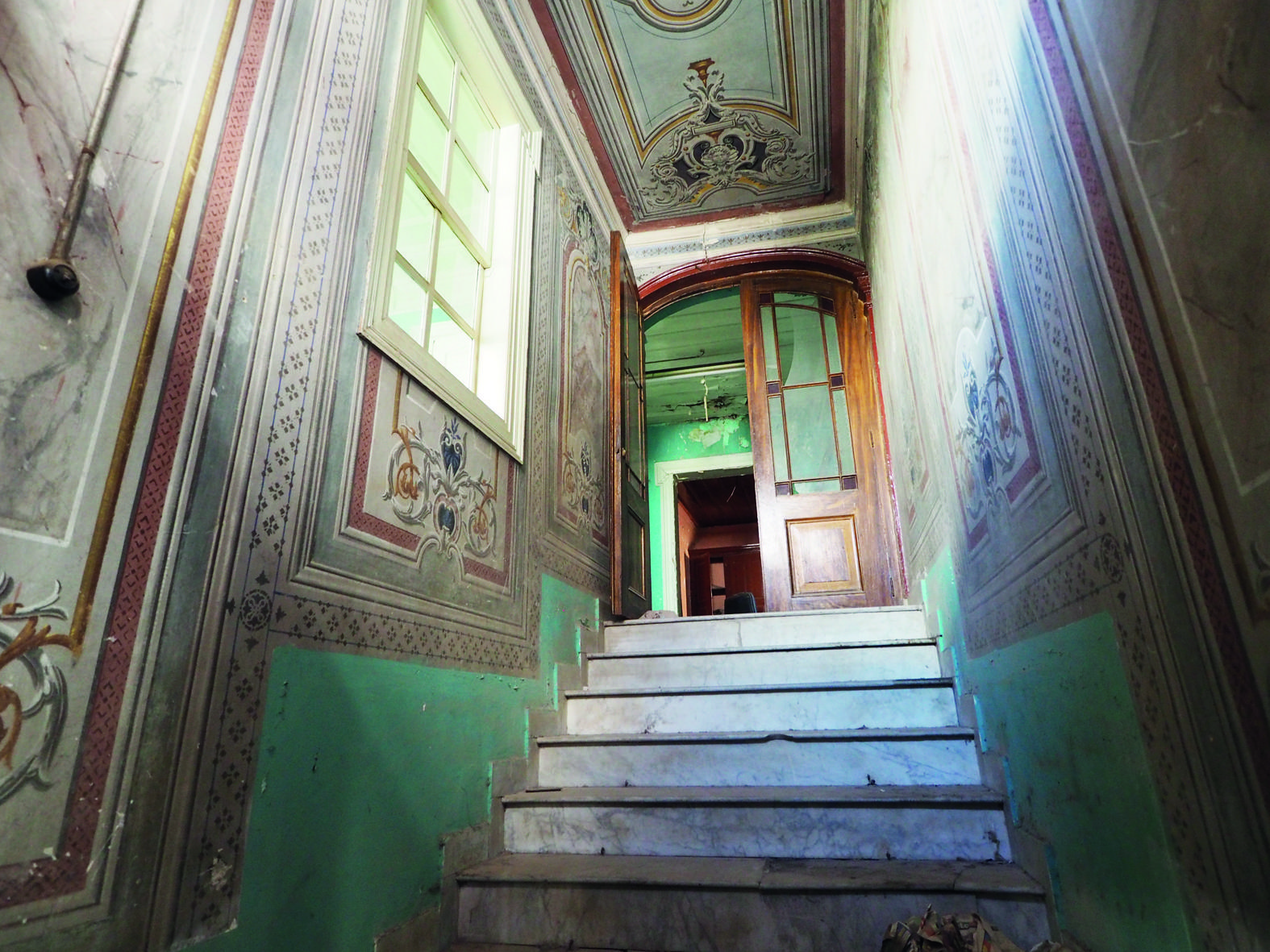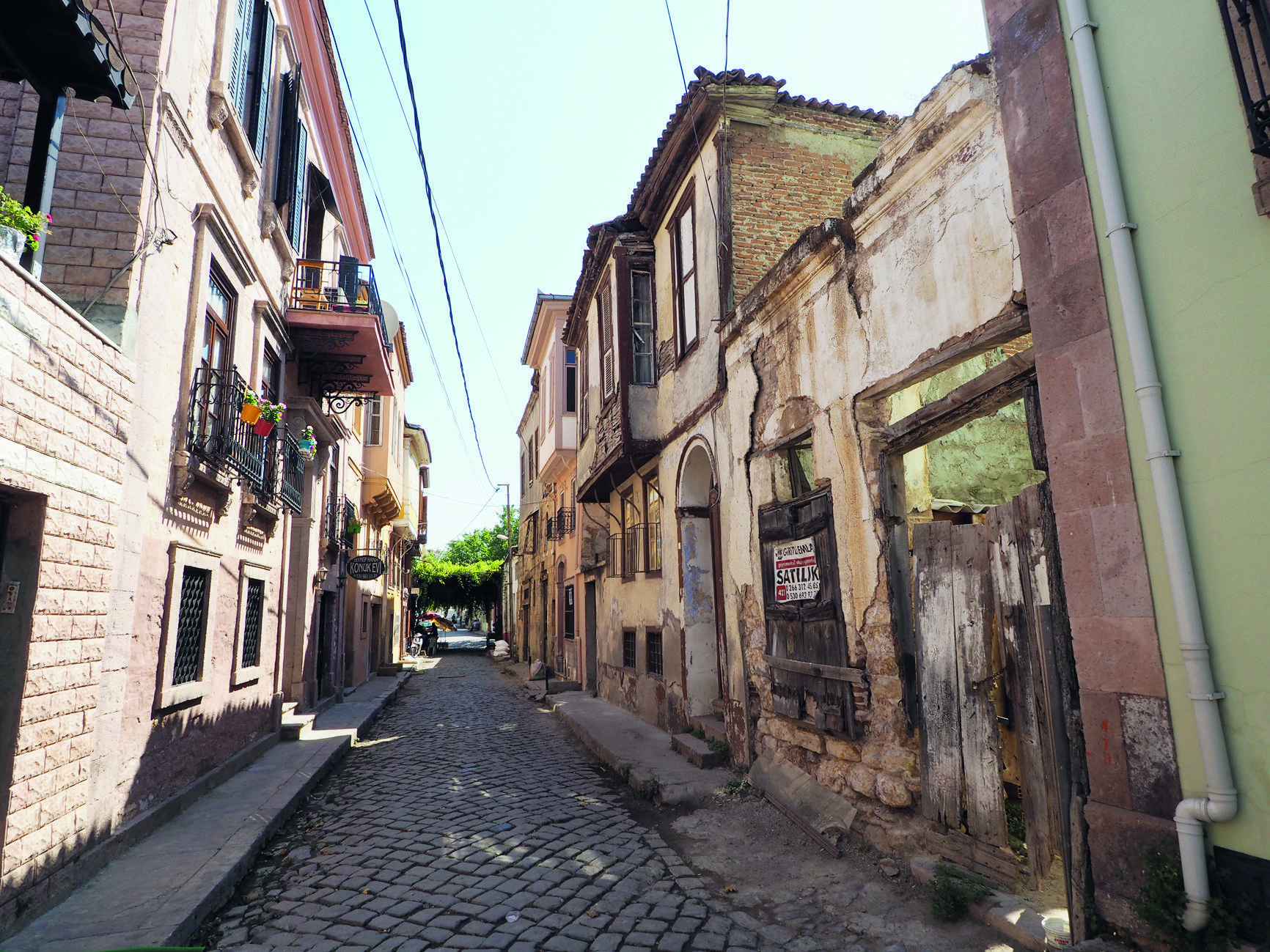Caveat emptor as historical buildings go up for sale
Wilco Van Herpen

About 30 percent of the local population want to sell their house in Ayvalık. All those people who are able to sell their houses move to a place just outside the town.
Traveling through Turkey, I have visited many places that are slowly being abandoned by their original inhabitants. The economic situation is frequently cited as one of the factors that people leave the village but I believe that younger people especially seek pastures new for a more active and exciting life.It is a pity to see some beautiful and authentic villages half-empty because nobody is able to earn enough money to make a decent living. It is doubling galling when you know that many of those villages are so beautiful that it should not be difficult to attract tourists, which would be a pretty good source of income.
Another important factor is that people who live in old houses are not (sufficiently) being subsidized by the local or national government when they want to restore their houses. In this case there are two alternatives:
1) You sell your house and move to the outskirts of the city or leave your village and start a “new” life somewhere else; or
2) You demolish your house (if that is possible, but if you live in a historical building, you are not permitted to tear it down) and build a “nice” new modern apartment from concrete.
I remember a chat I had with a farmer in a village in the Central Anatolian province of Konya. While speaking to a farmer over there he told me that soon he would tear down his old farm house and build a beautiful new house. While talking, his son also joined the conversation and I asked him if he agreed with his parents’ idea. His answer surprised me. He did not want his parents to tear down the house because it was a great place to live in. The house was cool during the hot summer months, and warm during the winter.
“The house is breathing, isolating us from the harsh weather conditions here and we hardly have any insects now,” he told me. “My father and mother do not want to listen to me and as a son I do not have the right to obstruct their thoughts. But it will not be the kind of house I would like to live in, so I most probably will sell it later.”
 Strict rules
Strict rules In Turkey it is possible to get a subsidy when you want to restore a house, but the rules are so strict that it is almost impossible for people to comply with all those rules. If you put one nail in the wrong place, if you convert two rooms into one, if you use the wrong material, you could even be sent to prison in the worst case. There is a famous story about a man who restored a house in Safranbolu but because he wanted to change it into a hotel, he changed a couple of the original designs of the house. Inspectors who came to check if the man obeyed the rules noticed the changes, and the man ultimately ended up in prison.
Last weekend I was in Ayvalık. Walking through the old streets of Ayvalık, where many of the houses were built in the 1890s, I noticed that a vast number of houses were for sale. How can a lovely place that is so popular with tourists have so many buildings for sale? About 30 percent of the local population want to sell their house and, while walking around in the old center, to me it was as if it was even more. All those people who are able to sell their houses move to a place just outside Ayvalık, but these are the happy few. Of the many houses, all that remain are two or three walls and even then some people do buy those “houses.” While walking around in the old area of Ayvalık, some people invited me into their house and all echoed the same complaint. Buying a house is easy, the place is very nice, but when you want to change something, it becomes a bureaucratic nightmare. One woman bought a house a while ago and the outside walls were covered with a yellow plaster. The original houses here are made of stone but this plaster was added later. She wanted to change it but had to fill in an application that would be send to a committee and then appraised. The whole process would take at least two years. Therefore, people reconsider buying such a nice and old house because you never know what will happen after buying it.
 At the same time, you can see examples of restorations that are too bad for words. In Ayvalık there is this beautiful, newly restored church that, with a first look, gives you a nice impression of how the church used to be. But once you look closer, all you want to do is cry. Outside there are newly made stairs that were used during the restoration work. Once you go inside, which has been converted into a museum, there are irritating signs everywhere instructing visitors not to touch or sit in this or that place. My idea is that whenever you restore such a place, you should also restore it in a way that you can use it again. What is the use of a restored church without any function? Maybe I should not nag too much; at least this church has been restored, but it has been done in such a way that it does not have any feeling at all. The beautiful frescos that you can always see in the Greek Orthodox churches have been replace by some cheap copies that can be made at any printing house on the corner in your neighborhood. There are, ultimately, many more examples of how NOT to restore a church (or any other historical building).
At the same time, you can see examples of restorations that are too bad for words. In Ayvalık there is this beautiful, newly restored church that, with a first look, gives you a nice impression of how the church used to be. But once you look closer, all you want to do is cry. Outside there are newly made stairs that were used during the restoration work. Once you go inside, which has been converted into a museum, there are irritating signs everywhere instructing visitors not to touch or sit in this or that place. My idea is that whenever you restore such a place, you should also restore it in a way that you can use it again. What is the use of a restored church without any function? Maybe I should not nag too much; at least this church has been restored, but it has been done in such a way that it does not have any feeling at all. The beautiful frescos that you can always see in the Greek Orthodox churches have been replace by some cheap copies that can be made at any printing house on the corner in your neighborhood. There are, ultimately, many more examples of how NOT to restore a church (or any other historical building). Ayvalık houses for sale
While walking around Ayvalık, I was in shock. I have never seen so many houses for sale in such a small area. Agencies put their posters on houses, house owners stick an A4 on the window and sometimes the owner shows his house is for sale by just painting his mobile phone number on the wall with the text: house for sale. Most of the houses that are offered are in a bad condition which means that buying is not the end of your adventure. Once you buy it you have to deal with the famous and often-feared “ustas” (craftsman) who often turn out to be nothing more than mere amateurs who thinks they know everything about building and working on houses but generally do not even know how to hold a hammer. Dealing with those ustas is yet another story.
Ayvalık could be one of the pearls of the Aegean coast but slowly but it is becoming a wart. It deserves more and therefore needs your help.
















